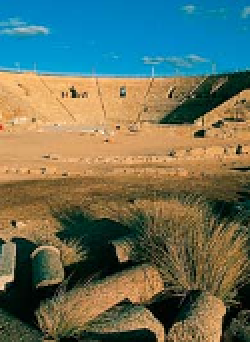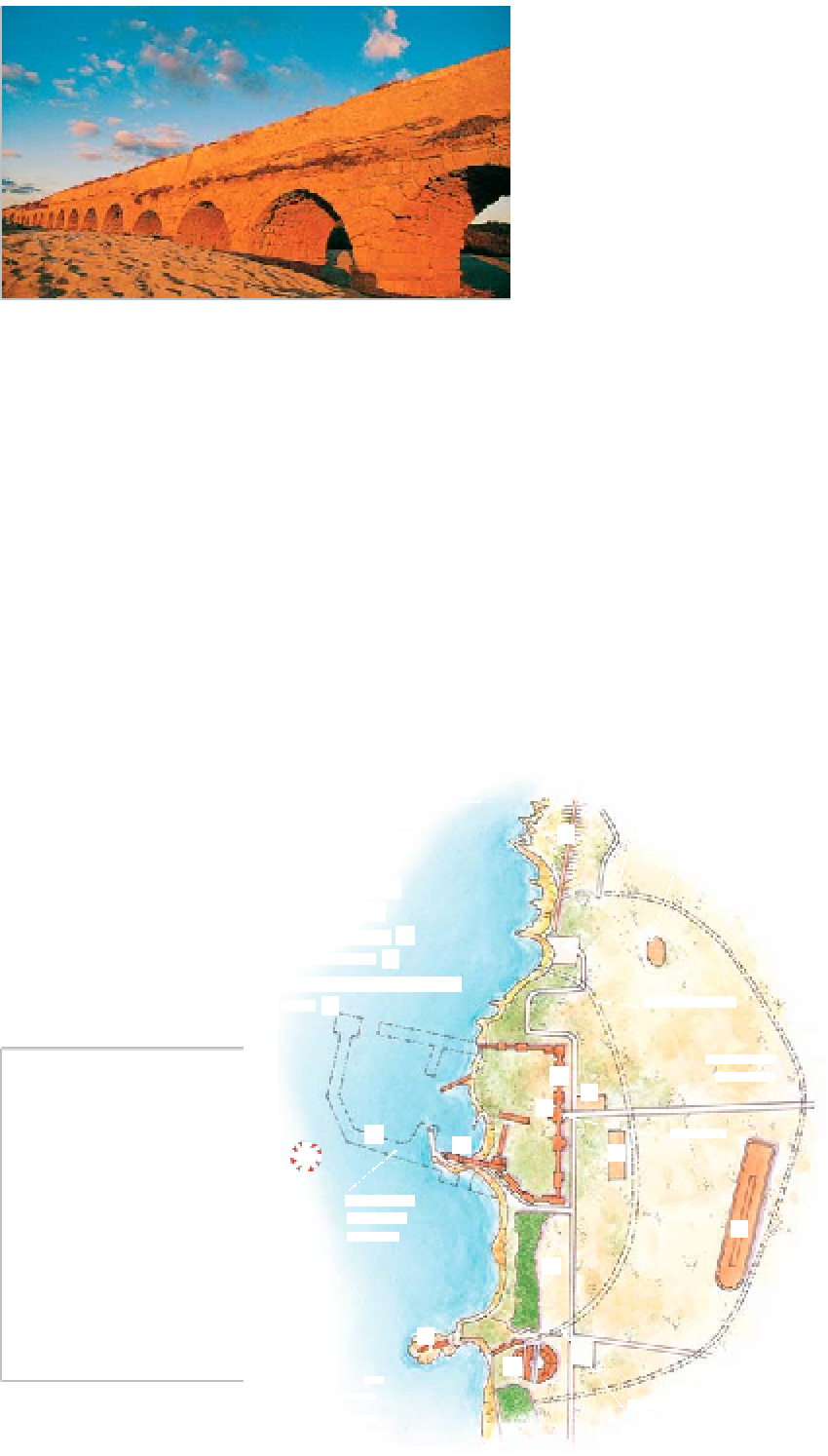Travel Reference
In-Depth Information
On the coast by the inner
harbour is the Crusader citadel,
still surrounded by walls which
date back to around AD 1250.
Enclosing this whole area are
the ruins of the much larger
Crusader city walls. Within
these ruins lies the unique
Underwater Archaeological
Park
. The four diving
complexes at this new park
enable divers to see the
techniques used to build the
ancient port, as well as
remnants of wrecked ships.
North of the ancient city is
the extraordinary Roman
aqueduct dating from the
Herodian period. Extending
for 17 km (11 miles), it carried
water from the foothills of
Mount Carmel to Caesarea.
A short way to the south of
the site, the
Caesarea
Museum
has interesting
artifacts from the Roman city.
T
Caesarea National Park
#
8am-4pm daily.
& 7
T
Underwater
Archaeological Park
Caesarea Harbour.
Tel
(04) 626 5898.
l
#
6am-dark daily.
& 7
E
Caesarea Museum
Kibbutz Sdot Yam.
Tel
(04) 636
The impressive Roman aqueduct at Caesarea
Caesarea
2
Road map
B2.
@
76 and 77 from
Khadera.
n
(04) 617 4444/6550.
At the height of his power,
in 29-22 BC, Herod the Great
(see pp43-5)
built a splendid
city over the site of an ancient
Phoenician port and dedicated
it to Augustus Caesar, the
Roman emperor. The splendour
of this city is attested to by
the lavish description of it
by Flavius Josephus in his
book
The Jewish War
. Until
the many recent excavations,
this had been seen by many
scholars as wild exaggeration.
This period of prosperity
lasted in Caesarea until AD
614, after which its history
became more unstable. During
the early 12th century and the
Crusades, Caesarea again
became an important city,
and was used once more as a
port. By the late 13th century
however, it had been
destroyed by the Mamelukes
and was left to be reclaimed
by the sand, with only a small
Arab village remaining. The
importance of these great
hidden ruins was not realized
until the 1940s, and now
Caesarea is one of Israel's
major archaeological sites.
Most of the main sights lie in
the
Caesarea National Park
. If
entering from the south, you
will first see the huge Roman
theatre. With seats for 4,000
spectators, it has been restored,
and hosts summer concerts.
A short distance to the west,
on a small coastal promontory,
a group of half-submerged
walls indicate the site of
Herod's palace. Further inland
are the neglected ruins of one
of the largest hippodromes in
the Roman Empire.
l
4367.
#
daily.
& 8 7
RUINS OF CAESARE
Byzantine wall
Byzantine street
4
Crusader citadel
5
Crusader wall
6
Herod's pala
Hippodro
Rom
R
U
7
rodian
itheatre
6
h
n
8
5
4
3
h
2
1
dera
0 metres
The magnificent ruins of the Roman
theatre at Caesarea
0 yards
Caesarea Museum
For hotels and restaurants in this region see pp258-9 and pp275-8













































































